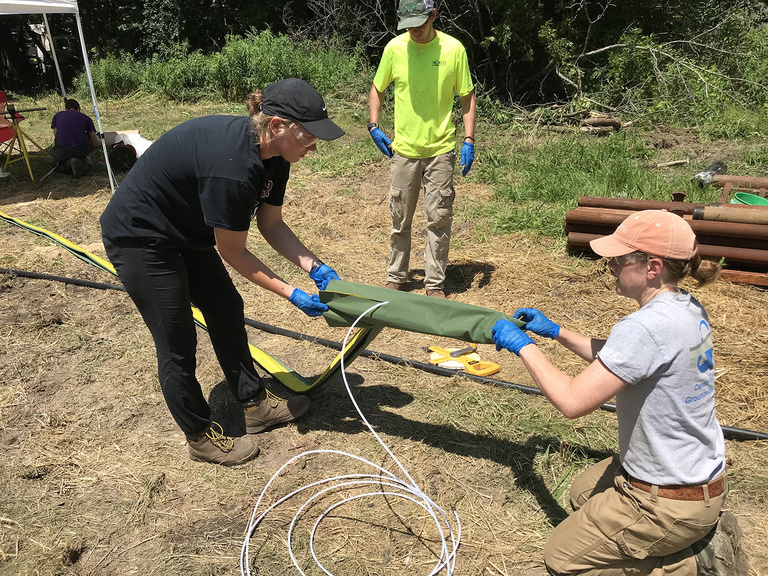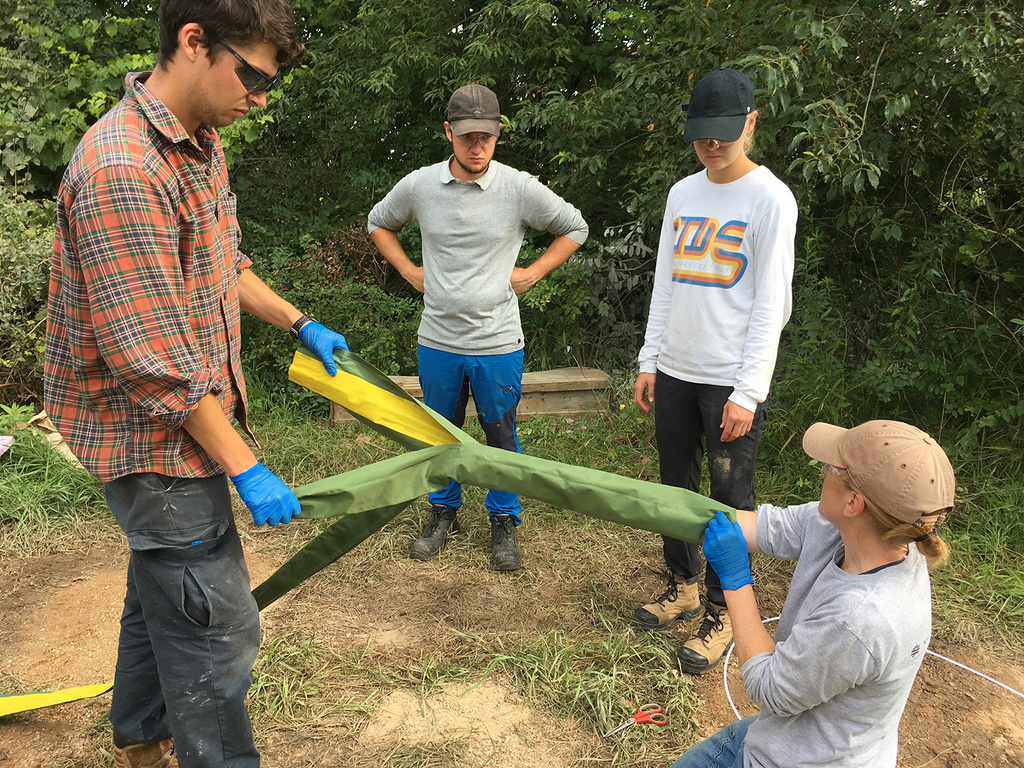
There’s a lot more going on underground than most of us imagine.
IIHR researcher Jessica Meyer is working to develop new insights on how groundwater moves and innovative ways to characterize its flow. Meyer, an assistant professor in the University of Iowa Department of Earth and Environmental Sciences, says that understanding the flow of groundwater can be difficult.
“It’s challenging because you can’t observe any of it directly,” she says. But for the more than 110 million people in the United States who get their drinking water from groundwater sources, it’s important.
Although groundwater is an excellent source of clean, reliable drinking water, contamination is a problem. “We’ve certainly degraded that resource in many areas,” Meyer says. “In some systems, we’re very effective at remediating it. And in some systems, remediation is much more challenging.”
Meyer says her role is to take the first step, which is to understand how the water is moving and where the contaminants are. “You can’t clean up something if you don’t know where it is to begin with.” Geology is often very complex and essentially serves as the “plumbing” for groundwater. So, you are trying to understand how the water moves through the complex plumbing of the geology. To achieve these goals, Meyer is developing new tools and techniques that illuminate the subsurface to better understand groundwater flow and contaminant transport.
The process often begins with continuous core — long tubular samples of subsurface rock collected by a drill rig. “We can use that core to understand the geology and the water and contaminants moving through it,” Meyer says.
Meyer also takes measurements from the borehole, installing instruments called multilevels to turn one hole into many different wells. “Where typical studies have three data points, multi-levels provide 7 to 40. It provides new insights in terms of the kind of geological features that are influencing flow.”
Many times, the contamination occurred decades ago. “It’s not uncommon to be working at sites where the contamination went into the ground sometime prior to 1970, and you’re still working on it in 2020.

“What is unfortunate is that we keep repeating that situation where we don’t necessarily think about these new compounds that we’re creating in terms of their environmental impacts long-term,” Meyer says.
She partners with scientists who design strategies to remediate groundwater contamination. One technique is to pump the water out and treat it at the surface. But Meyer says it’s often preferred to treat the water where it is – it can be more cost effective and doesn’t move the problem around. “But it all just gets harder to do when you have to do it in the subsurface,” she explains. “You don’t have as much control.” So, Meyer says, anytime we can take advantage of natural processes that help to clean up the contamination, it’s a plus.
For example, microbes present in aquifers can be efficient at remediating some contaminants so long as they have everything they need to “make a living.” One clean-up technique includes adding things to the subsurface to help along the natural degradation processes. “It gets pretty crazy,” Meyer says. “You might literally add bacteria that degrade the contaminants to the subsurface, or you might add the things that the bacteria need.” This could include oxygen or carbon, sometimes in the form of vegetable oil or molasses.
In other cases, Meyer says, remediation means building a permeable reactive barrier. “It’s almost like building a filter in the subsurface that we route the groundwater through. There’s a treatment process that happens within that filter as the water flows through it.”
Meyer would like all Iowans to be more aware of their groundwater and its importance. It’s something many of us don’t think about very often, even if we draw drinking water directly from the aquifer.
“The expectation is very much just, there’ll be water,” Meyer says. “If we’re talking about trying to manage a resource in a sustainable fashion, we need to know more about it. We need to understand it. Because you can’t manage what you don’t understand.”
